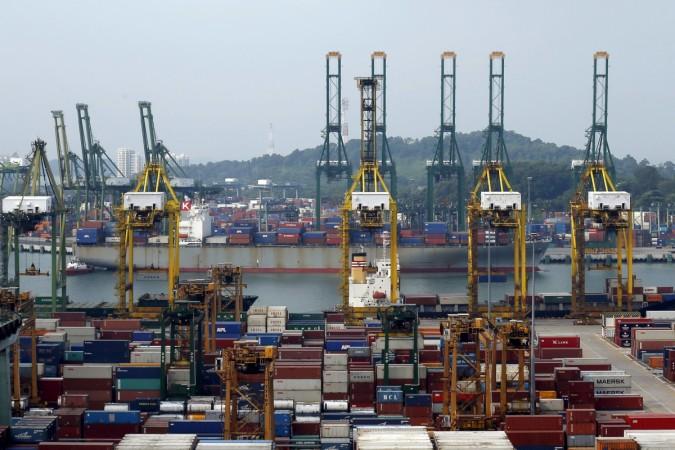
China's economy grew an annual 7 percent in the second quarter, steady with the previous quarter and slightly better than analysts' forecasts, though further stimulus is still expected after the quarter ended with a stock market crash.
It has been a difficult year for the world's second-largest economy. Slowing growth in trade, investment and domestic demand has been compounded by a cooling property sector, deflationary pressure, and most recently a stock market crash, so the recent sequence of data releases showing signs of improvement may help buttress faltering confidence in the effectiveness of prior policy support measures.
Analysts polled by Reuters had forecast gross domestic product (GDP) in the world's second-largest economy would grow 6.9 percent in April-June from a year earlier, compared with 7.0 percent in the March quarter.
On a quarterly basis, the economy grew 1.7 percent compared with 1.4 percent in the March quarter, the National Bureau of Statistics said on Wednesday.
Monthly activity data, released alongside the GDP report, also beat expectations across the board to show signs of a rebound, with factory output hitting a five-month high.
The statistics bureau said the changes, which included better-than-expected employment conditions, were "hard won" but further moves were needed to consolidate recovery.
"We must also take note that domestic and the external economic environment remains complex, and the global economic recovery is tortuous and slow," the bureau statement said.
Data on Tuesday showed bank lending increased sharply in June, thanks to central bank support, but how much of that new credit flowed into the real economy, as opposed to supporting stock market speculation, is unclear.
However, Wednesday's data showed fixed-asset investment rose an annual 11.4 percent in the first six months of 2015, the bureau said, while industrial output growth quickened to 6.8 percent. Retail sales quickened to 10.6 percent, suggesting a wider economic effect.
Some have questioned the accuracy of recent official data releases, saying they don't fit with other signs of general weakness, in particular inflation data. The statistics bureau on Wednesday insisted the growth data was accurate and rejected suggestions that figures were being inflated.
However, it's not just the government that has been reporting a warmer second quarter; the recent independent China Beige Book survey also reported signs of a broad-based recovery for the period, which it said was largely driven by growth in the interior provinces.
"While actual growth is almost certainly a percentage point or two slower than the official figures show, there are good reasons to think that the latest figures are mirroring a genuine stabilization of conditions on the ground," wrote Julian Evans-Pritchard, economist at Capital Economics in Singapore.
"One reason is that the surge in brokerage activity associated with the equity bubble feeds directly into the service sector component of GDP.
"Perhaps more importantly, there is growing evidence of an improvement in the wider economy."
Chinese stock markets did not celebrate the news, however, with benchmark indexes down nearly 3 percent in morning trade. The government is still trying to stabilize its exchanges, which lost as much as 30 percent in a few short weeks of panicked selling before Beijing stepped in with a slew of support measures.
The statistics bureau said a stable stock market was vital for China's economy and forceful measures taken recently to contain the meltdown were showing results.
"The data is largely in line with market expectations, and thus there will be no major impact on the stock market," said Zhang Qi, senior stock analyst at Haitong Securities in Shanghai.
"Stock investors at present care more about what the government policy toward the market is, whereas the connection between the economy and the market has somehow loosened."
The government has forecast economic growth of around 7 percent for 2015, which would be the weakest rate in 25 years.








